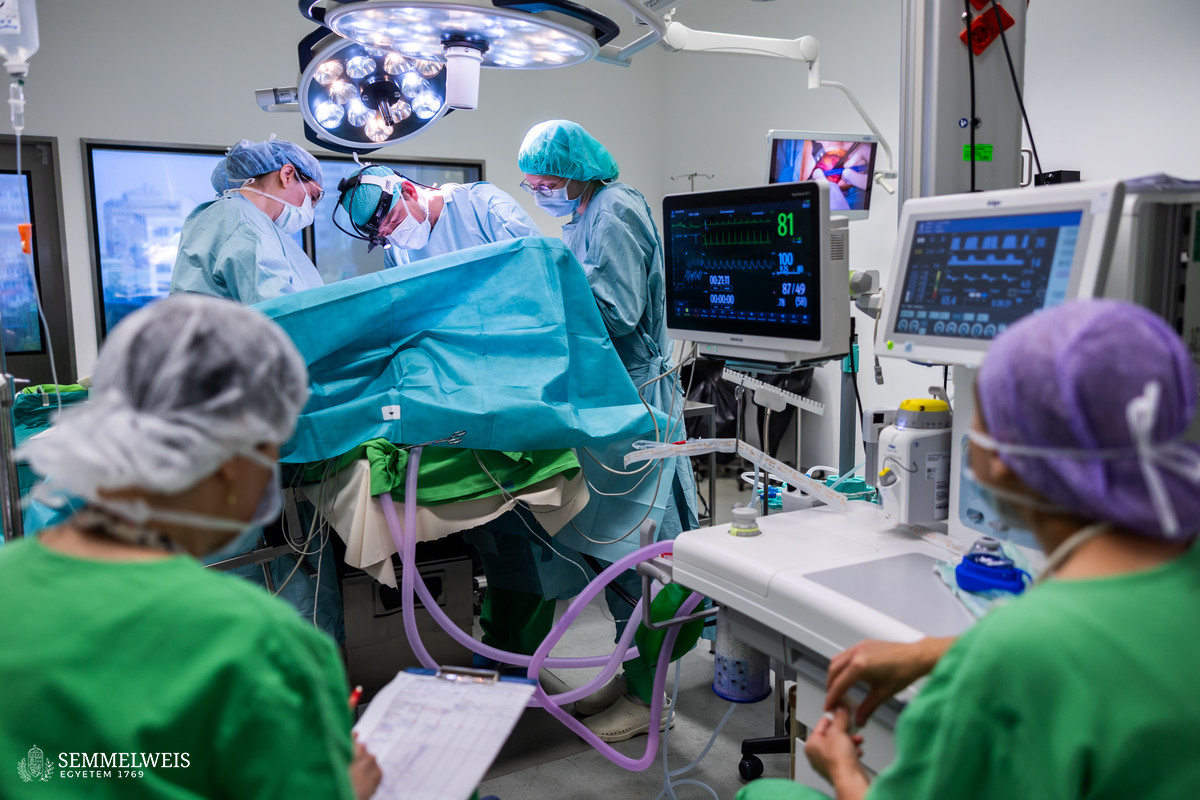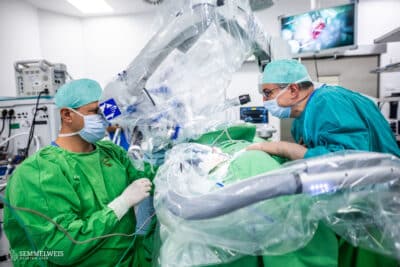The leader of the working group, Assistant Professor Dr. Zoltán Klárik, emphasized that their primary task at STéG was to care for patients who suffered from breast cancer or had undergone any other form of breast surgery. At the same time, given that plastic surgery is a multidisciplinary profession, the working group collaborates with many specialties: in particular, they work with frontier areas where it is essential to perform immediate reconstruction, he added.
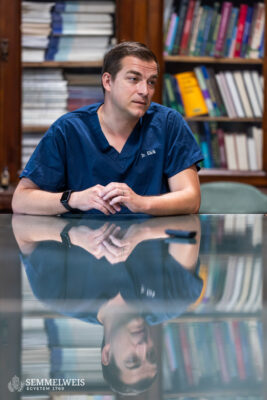 Typically, they provide plastic surgery for patients at the Department of Otorhinolaryngology, Head and Neck Surgery, the Department of Oro-Maxillofacial Surgery and Stomatology, the Department of Orthopedics, the Department of Traumatology, and the Department of Dermatology, Venereology, and Dermatooncology, and they also collaborate with the Department of Ophthalmology. Most recently, they had to correct a chest wall deformity or defect in a patient who had undergone heart surgery at the Városmajor Heart and Vascular Center, the assistant professor explained.
Typically, they provide plastic surgery for patients at the Department of Otorhinolaryngology, Head and Neck Surgery, the Department of Oro-Maxillofacial Surgery and Stomatology, the Department of Orthopedics, the Department of Traumatology, and the Department of Dermatology, Venereology, and Dermatooncology, and they also collaborate with the Department of Ophthalmology. Most recently, they had to correct a chest wall deformity or defect in a patient who had undergone heart surgery at the Városmajor Heart and Vascular Center, the assistant professor explained.
“Fortunately, the way we can contribute to the workings of other clinics is gaining common knowledge at the university, and we are receiving more and more requests to collaborate in cases that seem unsolvable, and we are asked to find a means of reconstruction,” said Dr. Zoltán Klárik.
After graduating from university, Dr. Zoltán Klárik became involved in research, his main interest being microsurgical techniques: Under a magnifying instrument, he had to suture 2-3 mm sized structures (nerves, vessels, veins, or arteries) with special equipment, using a technique he had acquired during his training at the National Institute of Oncology, where he worked in the head and neck surgery department. “When I came to Semmelweis University, I tried to master and integrate this technique even better,” he explained.
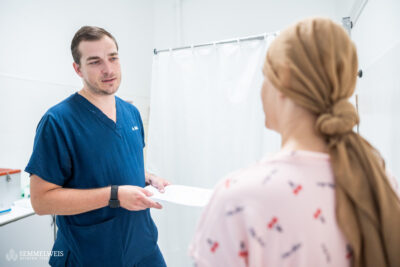 The very first surgery he performed here involved a female patient who had been hospitalized for more than six months after orthopedic surgery for an underlying joint condition that had resulted in her hip and knee being fitted with prostheses. She developed an infection after one of her surgeries, an inflammatory process that did not heal with conservative treatment. In the end, the staff of STéG and the Department of Orthopedics performed a special operation on the limb, which allowed the patient to be discharged home after a short time.
The very first surgery he performed here involved a female patient who had been hospitalized for more than six months after orthopedic surgery for an underlying joint condition that had resulted in her hip and knee being fitted with prostheses. She developed an infection after one of her surgeries, an inflammatory process that did not heal with conservative treatment. In the end, the staff of STéG and the Department of Orthopedics performed a special operation on the limb, which allowed the patient to be discharged home after a short time.
In head and neck surgery, when a tumor is removed, a gap appears in the oral cavity or pharynx, which may not be possible to close with local or regional flaps, but can be covered with a special surgical technique, Dr. Zoltán Klárik noted. A large number of oral cavity tumors are operated on at the Department of Oro-Maxillofacial Surgery and Stomatology, and the procedure is usually closed with the so-called free flap surgery technique. This means that we remove skin and muscle tissue from the patient’s body, even from a remote part of it, together with the blood supply, for which we find a receptive vascular network during the ‘transplantation’ and attach it with special microsurgical techniques, thus ensuring the blood circulation of the tissue, the plastic surgeon explained.
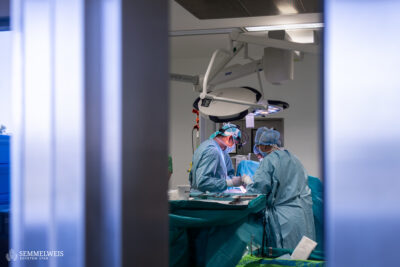 He added that a lot of bone replacement operations were also performed in collaboration with oral surgeons, following both benign and malignant tumor lesions. This involves taking a piece of bone from the leg, shaping it with special 3D templates, and trying to copy the shape of the jaw. It is essential to use matter from the patient’s own body, which will not be rejected later, he emphasized. Although the bone removed from the leg is ‘sacrificed’, this does not impair the patient’s mobility or quality of life, he added.
He added that a lot of bone replacement operations were also performed in collaboration with oral surgeons, following both benign and malignant tumor lesions. This involves taking a piece of bone from the leg, shaping it with special 3D templates, and trying to copy the shape of the jaw. It is essential to use matter from the patient’s own body, which will not be rejected later, he emphasized. Although the bone removed from the leg is ‘sacrificed’, this does not impair the patient’s mobility or quality of life, he added.
We cooperate with ENT specialists mostly in the treatment of tumors affecting the tongue, oral cavity, or pharynx, continued Dr. Zoltán Klárik. With skin tissue taken from the forearm or thigh, they can fill the gap between the oral cavity and the neck, or create a “voluminous” structure in the mouth that somewhat restores the function of the tongue so that the patient can swallow.
As can be seen from the procedures outlined above, these types of plastic surgery offer far more to patients than just the oncological aspects. As the assistant professor stressed, reconstructive procedures could not only improve quality of life but also preserve function and offer patients a more aesthetically pleasing option.
Dr. Zoltán Klárik considers it possible to cooperate with additional clinics once the working group is expanded. Members of the team are his co-workers Associate Professor Dr. Gábor Bognár, Assistant Lecturer Dr. Tímea Pálházy, and Clinical Specialist Dr. Máté Jancsó, he said, adding that some of his trainee specialist colleagues also contribute to the team’s work. He underlined that Director Dr. Attila Szijártó is supportive of their affiliation with other clinics alongside their work at STéG.
Eszter Keresztes
Translation: Judit Szabados-Dőtsch
Photos by Bálint Barta – Semmelweis University
